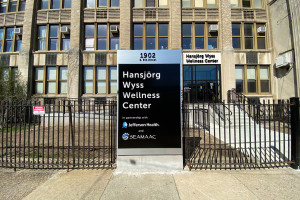NextUp: The Company Using Gene Therapy to Cure Rare Skin Conditions
Castle Creek Biosciences is developing several treatments that may provide relief for "Butterfly Children" and others living with rare genetic diseases.

John Maslowski is the chief executive officer of Castle Creek Biosciences. / Courtesy photo
“NextUp” is a weekly NextHealth PHL feature that highlights the local leaders, organizations and research shaping the Greater Philadelphia region’s life sciences ecosystem. Email qmuse@phillymag.com with pitches for NextUp.
Who: New Jersey-based Castle Creek Pharmaceutical, a privately held company focused on developing treatments for rare genetic disorders, recently acquired Exton-based Fibrocell Science, a cell and gene therapy company focused on creating cell-based therapies for skin and connective tissue diseases.
The two companies combined to create Castle Creek Biosciences, a company working to advance a topical ointment and a new gene therapy platform to treat a range of rare genetic diseases and skin conditions.
What: Before the merger, both Castle Creek and Fibrocell had advanced investigational therapies for the treatment of epidermolysis bullosa (EB) into late-stage clinical research. EB is a group of rare genetic conditions that make the skin susceptible to easy blistering and scarring.
Castle Creek Biosciences’ most advanced product is the gene therapy FCX-007, a treatment that is designed to treat the life-threatening genetic disorder recessive dystrophic epidermolysis bullosa (RDEB). For children living with the RDEB, even the slightest touch, rub or scratch can lead to severe blistering or the removal of large areas of skin.
The company is currently conducting a pivotal Phase III clinical trial to test the efficacy of its novel gene therapy platform that involves collecting skin cells from each patient, genetically modifying the cells, and injecting the modified cells back directly into the patient’s blisters and wounds. In this process, the patient’s cells are genetically modified by a viral vector to introduce type seven collagen, an important protein that helps hold the layers of skin together. Castle Creek believes its gene therapy treatment can create the anchoring fibrils that hold the layers of skin together, preventing the characteristic blistering and scarring of EB.
Castle Creek also has a topical ointment in Phase II trials that is believed to block an important inflammatory signaling pathway in epidermolysis bullosa simplex (EBS), the most common form of epidermolysis bullosa. A third product in the company’s pipeline is a gene therapy aimed at treating localized scleroderma, a chronic autoimmune disorder that causes excessive collagen deposits that result in thickening of the dermis and underlying tissue. It also causes pain, restricted motion, disfigurement and developmental issues.
“The ultimate goal is to create a treatment platform for multiple EB patients and to become the leading EB treatment company in the United States and around the world,” chief executive officer of Castle Creek Biosciences, John Maslowski, told NextHealth PHL.
When: In April 2019, Castle Creek and Fibrocell entered into a collaboration agreement to develop and commercialize what was then Fibrocell’s lead gene therapy candidate, FCX-007. Castle Creek officially acquired Fibrocell for $63.3 million in December 2019. Maslowski believes the merger will enable the combined company to play a more dominant role in developing treatments for EB and other rare diseases.
“We really wanted to create a combined effort to treat the EB population in a more general way and really become a leader there,” Maslowski said.
“As we moved along in our partnership, it just seemed to make a lot of sense to us and Castle Creek that we really should be combined as one company because it creates a lot of synergies. We had a lot of experience in gene therapy, R&D, and manufacturing. They had a lot of clinical experience with EB patients and a lot of the commercial experience that we were missing. So that marriage really filled in a lot of the gaps and together, made us a more complete company.”
Why: According to the National Institutes of Health, EB is estimated to affect one in 30,000 to 50,000 people in America. Patients living with EB are called “butterfly children” because their skin is as fragile as a butterfly’s wings. Any friction caused by simple daily acts, like putting on clothes or hugging, can result in mild to severe blistering and skin erosion.
“If you can imagine, with just a little bit of lateral friction, EB patients get blisters all over their body. It’s extremely painful, it leads to all sorts of other medical complications, and many EB patients tend not to live into their 30s,” Maslowski explained.
There are currently no treatment options approved by the U.S. Food & Drug Administration for any form of EB.
What It Means: With its years of combined expertise in developing and commercializing new treatments for rare diseases, Castle Creek Biosciences has the potential to bring an EB treatment to the market within two to three years.


